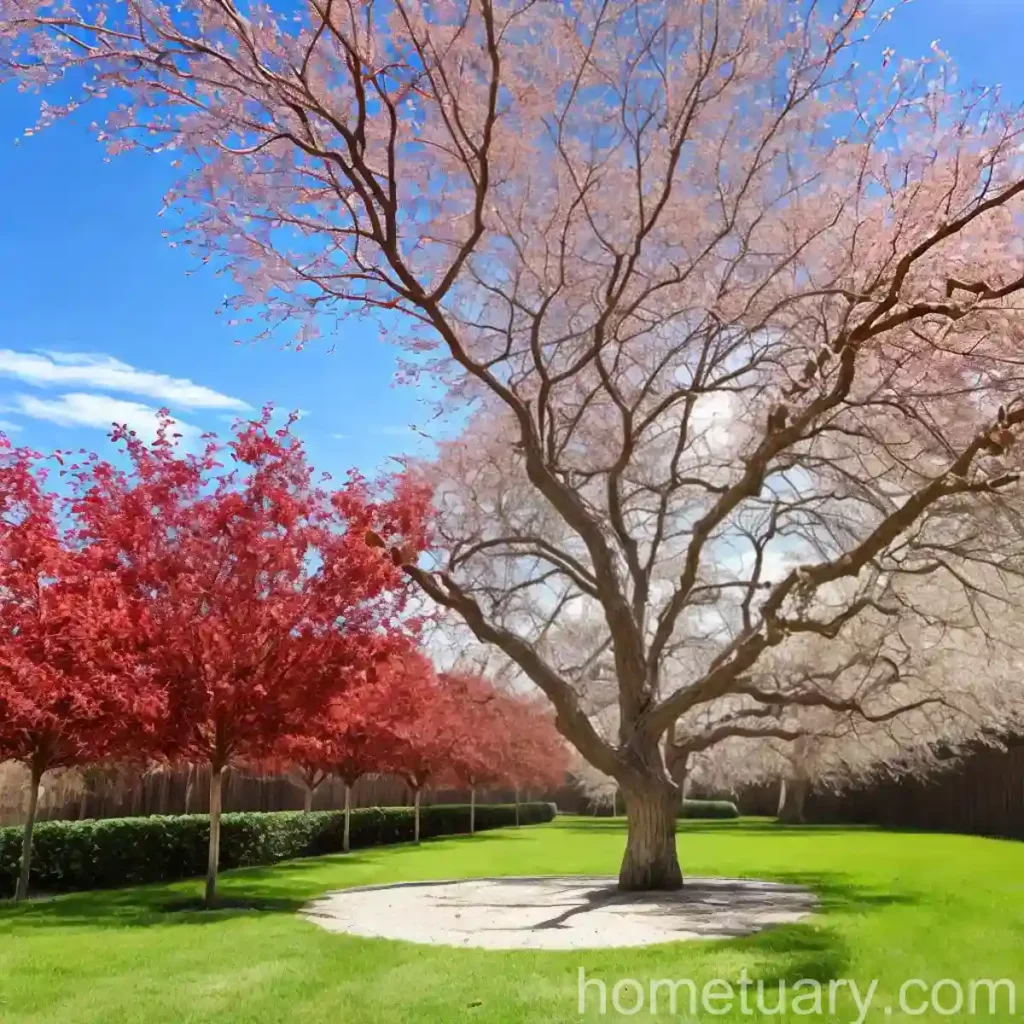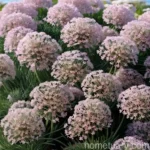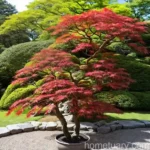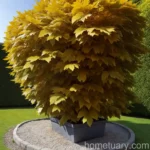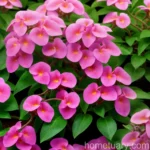Everything You Need to Know About Sweet Gum (Liquidambar acalycina)
Welcome to our comprehensive guide to the stunning sweet gum tree, a beautiful and versatile plant that has captured the attention of plant enthusiasts and horticulturists around the world. In this guide, we will dive deep into the characteristics, cultivation, uses, and maintenance of the sweet gum (Liquidambar acalycina). From its unique features and growth habits to its medicinal uses and landscape design potential, we will explore every aspect of this remarkable tree.
Liquidambar acalycina Characteristics
Liquidambar acalycina, commonly known as Sweet Gum, is a deciduous tree that belongs to the Altingiaceae family. It is native to China and is celebrated for its vibrant foliage and beautiful form. The tree produces a unique, spiky seed pod that adds ornamental value to the landscape. The plant is renowned for its breathtaking fall color and aromatic resin.
Sweet Gum Tree Features
- Deciduous tree
- Vibrant foliage
- Ornamental seed pods
- Aromatic resin
- Spectacular fall color
Liquidambar acalycina Growth Habits
The sweet gum tree typically grows to a height of 40-60 feet, with a spread of 20-30 feet. It has a moderate growth rate and a pyramidal to conical shape when young, maturing into a more rounded crown with age. The tree’s growth habits make it an excellent choice for providing shade and ornamental value in a variety of landscapes.
Sweet Gum Plant Description
The leaves of Liquidambar acalycina are alternate, simple, and palmately-lobed, resembling the shape of a star. The foliage starts as a medium green in spring and summer, turning brilliant shades of yellow, orange, and red in the fall. The spiky, round seed pods add visual interest to the tree, especially after the leaves have fallen.
Liquidambar acalycina Care Tips
To ensure the healthy growth of the sweet gum tree, it is essential to provide the appropriate care and maintenance. This includes attention to water, sunlight, soil, fertilizer, and pruning.
Sweet Gum Tree Medicinal Uses
In addition to its ornamental value, the sweet gum has been used in traditional Chinese medicine for various therapeutic purposes. The resin extracted from the tree has been historically used for its purported anti-inflammatory and analgesic properties. It has also been used in remedies for respiratory ailments and other health conditions.
Liquidambar acalycina Habitat
Liquidambar acalycina thrives in moist, well-drained soils and is often found in mixed forests, along streams, and in mountainous regions. It tends to prefer areas with full sun or partial shade, making it adaptable to a range of environmental conditions.
Sweet Gum Tree Diseases
While generally robust, sweet gum trees are susceptible to certain diseases that can affect their health and appearance. Common issues include rust diseases, leaf spots, and canker diseases. It is important to monitor the tree for signs of disease and take appropriate measures to mitigate potential damage.
Liquidambar acalycina Pruning Techniques
Pruning is an essential aspect of maintaining the sweet gum tree’s health and appearance. Proper pruning techniques help to promote optimal branching structure and overall tree form. It is crucial to prune the tree during the dormant season to avoid excessive sap bleeding and to encourage vigorous regrowth in the spring.
Sweet Gum Plant Propagation
Liquidambar acalycina can be propagated through seeds, cuttings, or grafting. Each method has its advantages and considerations, and selecting the most suitable propagation method depends on various factors such as time, resources, and desired outcomes.
Liquidambar acalycina Leaf Color
The leaves of Liquidambar acalycina undergo a remarkable color transformation throughout the year. The vibrant green foliage of spring and summer transitions into a breathtaking display of yellow, orange, and red hues in the fall, creating a stunning visual impact in the landscape.
Sweet Gum Tree Landscape Ideas
The ornamental value of the sweet gum tree makes it an excellent choice for landscape design. Its vibrant fall color, distinctive seed pods, and overall form contribute to its versatility in various settings, from residential gardens to public parks and urban spaces.
Liquidambar acalycina Leaf Shape
The leaves of Liquidambar acalycina are palmately-lobed, with each leaf resembling a star-like shape. This unique leaf structure adds visual interest to the tree throughout the growing season and becomes particularly striking during the fall color display.
Sweet Gum Tree Native Range
Liquidambar acalycina is native to China, where it thrives in diverse habitats, from mixed forests to mountainous regions. The tree’s adaptability and resilience have contributed to its widespread cultivation and appreciation in horticulture.
Liquidambar acalycina Uses in Landscaping
The sweet gum tree is valued for its aesthetic contributions to landscaping. Its striking fall color, distinctive seed pods, and year-round ornamental appeal make it a desirable choice for adding visual interest and natural beauty to outdoor spaces.
Sweet Gum Tree Varieties
Several cultivars of Liquidambar acalycina are available, offering varying characteristics such as leaf color, growth habit, and size. These varieties provide horticulturists and gardeners with options to select the most suitable sweet gum tree for their specific landscape and design preferences.
Liquidambar acalycina Leaf Fragrance
The crushed leaves of Liquidambar acalycina emit a pleasant fragrance, adding sensory appeal to the tree’s presence in the landscape. This subtle fragrance contributes to the overall experience of engaging with the tree in outdoor settings.
Sweet Gum Tree Benefits
In addition to its ornamental value, the sweet gum tree offers ecological benefits such as providing habitat and food for wildlife. The tree’s resilience and adaptability to various environmental conditions make it an asset in promoting biodiversity and ecological balance.
Liquidambar acalycina Wood Properties
The wood of Liquidambar acalycina is prized for its fine grain and attractive color, making it suitable for various woodworking applications. It has been traditionally used in furniture making, cabinetry, and veneer production.
Sweet Gum Plant Pollination
The sweet gum tree is monoecious, with separate male and female flowers borne on the same tree. Pollination occurs through the dispersal of pollen from the male flowers to the stigma of the female flowers, leading to the development of seeds within the unique spiky seed pods.
Liquidambar acalycina Fall Color
The fall color of Liquidambar acalycina is renowned for its vibrant display of yellow, orange, and red hues, creating a breathtaking tapestry of colors in the landscape. This seasonal transformation adds dynamism and visual impact to outdoor spaces.
Sweet Gum Tree Climate Requirements
Liquidambar acalycina is adapted to a temperate climate and is suitable for cultivation in regions with moderate summer temperatures and distinct seasonal changes. It is important to consider the tree’s climate requirements when selecting it for landscaping purposes.
Liquidambar acalycina Common Pests
Sweet gum trees may be susceptible to pests such as aphids, scale insects, and caterpillars, which can affect the tree’s health and vigor. Monitoring for signs of pest infestation and taking appropriate pest management measures is crucial for maintaining the tree’s well-being.
Sweet Gum Tree Shade Tolerance
Liquidambar acalycina exhibits moderate shade tolerance, making it adaptable to a range of light conditions. While the tree thrives in full sun, it can also withstand partial shade, offering flexibility in its landscaping applications.
Liquidambar acalycina Ornamental Features
The ornamental value of the sweet gum tree lies in its vibrant foliage, unique seed pods, and striking form. These features contribute to the tree’s aesthetic appeal and make it a sought-after choice for enhancing outdoor environments.
Sweet Gum Plant Pruning Schedule
Pruning of Liquidambar acalycina should be conducted during the dormant season to minimize stress on the tree and promote healthy regrowth in the spring. Regular pruning helps to maintain the tree’s shape and structure while removing any dead or diseased branches.
Liquidambar acalycina Leaf Texture
The leaves of Liquidambar acalycina have a medium texture, adding depth and visual interest to the tree’s overall appearance. Their distinct texture becomes more pronounced during the fall color display, creating a tactile and visual experience.
Sweet Gum Tree Wildlife Attraction
The sweet gum tree provides habitat and food for various wildlife species, including birds and small mammals. Its seeds and foliage offer valuable resources, contributing to the ecological significance of the tree in natural ecosystems.
Liquidambar acalycina Propagation Methods
Liquidambar acalycina can be propagated through seeds, cuttings, or grafting, each method offering unique advantages and considerations. Understanding the various propagation methods enables horticulturists and gardeners to expand the cultivation of the tree.
Sweet Gum Plant Companion Plants
Selecting suitable companion plants to grow alongside Liquidambar acalycina enhances the overall visual appeal and ecological balance of the landscape. Consideration of compatible plant species contributes to creating harmonious and thriving outdoor environments.
Liquidambar acalycina Sun Exposure
Liquidambar acalycina thrives in full sun to partial shade, requiring an adequate amount of sunlight for healthy growth and optimal foliage development. Providing the tree with the appropriate sun exposure is essential for its long-term well-being.
Sweet Gum Tree Root System
The root system of Liquidambar acalycina is generally well-behaved, making it suitable for planting in urban and residential landscapes. Understanding the root system’s characteristics helps in selecting appropriate planting locations and minimizing potential conflicts.
Liquidambar acalycina Leaf Size
The leaves of Liquidambar acalycina are medium-sized and contribute to the tree’s overall canopy volume and appearance. Their size and shape add dimension and structure to the tree’s foliage, creating a visually appealing presence in the landscape.
Sweet Gum Tree Water Requirements
Proper watering is essential for maintaining the health and vigor of Liquidambar acalycina, particularly during the establishment phase and periods of drought. Understanding the tree’s water requirements helps in providing suitable irrigation and moisture management.
Liquidambar acalycina Fertilization Needs
The sweet gum tree benefits from periodic fertilization to support its growth and foliage development. Selecting the right type of fertilizer and applying it at the appropriate times enhances the tree’s nutrient uptake and overall vitality.
Sweet Gum Plant Uses in Herbal Medicine
In traditional Chinese medicine, various parts of Liquidambar acalycina have been used for their purported medicinal properties. The resin and leaves of the tree have been employed in herbal remedies for addressing specific health conditions.
Liquidambar acalycina Tree Shape
The natural form of Liquidambar acalycina is pyramidal to conical when young, maturing into a more rounded crown with age. Its distinctive tree shape contributes to its ornamental value and landscape design potential.
Sweet Gum Tree Pests and Diseases Management
Regular monitoring for pests and diseases is essential for maintaining the health and vitality of Liquidambar acalycina. Implementing appropriate management practices helps in preventing and addressing potential issues that may impact the tree’s well-being.
Liquidambar acalycina Leaf Arrangement
The leaves of Liquidambar acalycina are arranged alternately along the branches, exhibiting a uniform and visually pleasing distribution. Their arrangement contributes to the overall canopy structure and aesthetic appeal of the tree.
Sweet Gum Tree Landscape Design
The sweet gum tree offers numerous opportunities for creative landscape design, from its vibrant fall color and unique seed pods to its adaptable growth habits and ornamental features. Incorporating Liquidambar acalycina into landscape designs adds natural beauty and visual interest to outdoor spaces.
Liquidambar acalycina Seasonal Changes
The seasonal changes of Liquidambar acalycina, particularly its remarkable fall color transformation, contribute to the ever-changing tapestry of colors and textures in the landscape. Understanding these seasonal shifts enhances the appreciation of the tree’s dynamic nature.
Sweet Gum Plant Cold Hardiness
Liquidambar acalycina exhibits good cold hardiness, making it suitable for cultivation in regions with moderately cold winters. Understanding the tree’s cold tolerance is essential for selecting appropriate planting locations and providing suitable care during winter months.
Liquidambar acalycina Leaf Fall Timing
The leaves of Liquidambar acalycina typically exhibit their vibrant fall color before transitioning to the deciduous phase. Understanding the timing of leaf fall enables proper maintenance and cleanup activities in the landscape.
Sweet Gum Tree Wind Tolerance
The sweet gum tree generally exhibits good tolerance to moderate winds, making it suitable for planting in open and exposed landscapes. Its ability to withstand wind stress contributes to its resilience in various outdoor settings.
Liquidambar acalycina Soil Preferences
Liquidambar acalycina thrives in moist, well-drained soils with a slightly acidic to neutral pH. Understanding the tree’s soil preferences helps in selecting suitable planting locations and providing appropriate soil management practices.
Sweet Gum Plant Container Gardening
Liquidambar acalycina can be grown in containers, offering versatility in its cultivation and use in various outdoor spaces. Understanding the considerations for container gardening enables horticulturists and gardeners to leverage the tree’s ornamental value in diverse settings.
Liquidambar acalycina Leaf Health Indicators
Monitoring the health of Liquidambar acalycina leaves is crucial for identifying potential issues such as nutrient deficiencies or diseases. Recognizing leaf health indicators contributes to timely interventions and maintaining the tree’s overall well-being.
Sweet Gum Tree Drought Tolerance
The sweet gum tree exhibits moderate drought tolerance once established, making it suitable for cultivation in regions with periodic dry spells. Understanding the tree’s water requirements and providing appropriate irrigation during drought periods enhances its resilience.
Conclusion
Wow! We’ve covered an incredible wealth of information regarding the sweet gum (Liquidambar acalycina) in this comprehensive guide. From its stunning characteristics and growth habits to its cultivation, uses, and maintenance, we’ve delved into every aspect of this remarkable tree. Whether you’re a plant enthusiast, horticulturist, or simply someone captivated by the beauty of nature, the sweet gum tree offers a myriad of opportunities for appreciation and exploration.
We hope this guide has provided you with valuable insights into the world of Liquidambar acalycina and inspired you to explore further the enchanting realm of plants and trees. The next time you encounter a majestic sweet gum tree, you’ll have a newfound appreciation for its ornamental value and ecological significance. Happy planting!
References
- Missouri Botanical Garden. Liquidambar acalycina. https://www.missouribotanicalgarden.org/PlantFinder/PlantFinderDetails.aspx?taxonid=291058
- North Carolina State University Extension. Liquidambar styraciflua. https://plants.ces.ncsu.edu/plants/all/liquidambar-styraciflua/
- University of Florida IFAS Extension. Liquidambar styraciflua. https://sfyl.ifas.ufl.edu/lawn-and-garden/trees-and-shrubs/liquidambar-styraciflua
- The Morton Arboretum. Liquidambar styraciflua. https://www.mortonarb.org/trees-plants/tree-plant-descriptions/sweetgum
- Royal Horticultural Society. Liquidambar styraciflua. https://www.rhs.org.uk/Plants/59045/i-Liquidambar-styraciflua-i/Details

